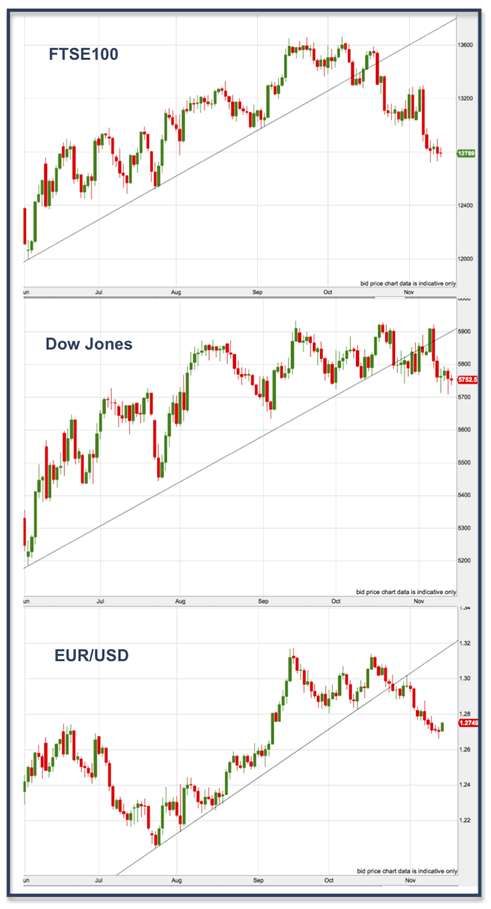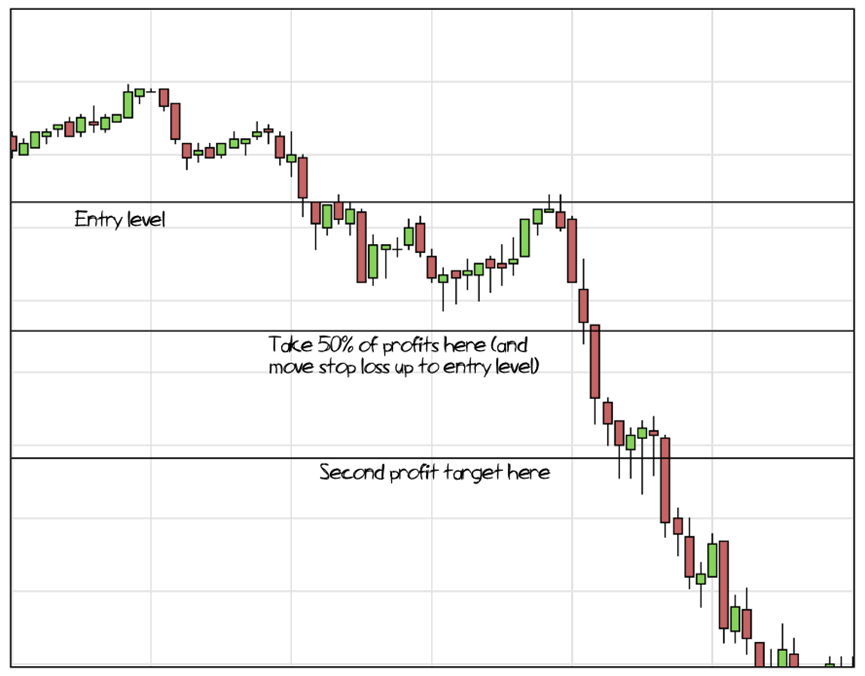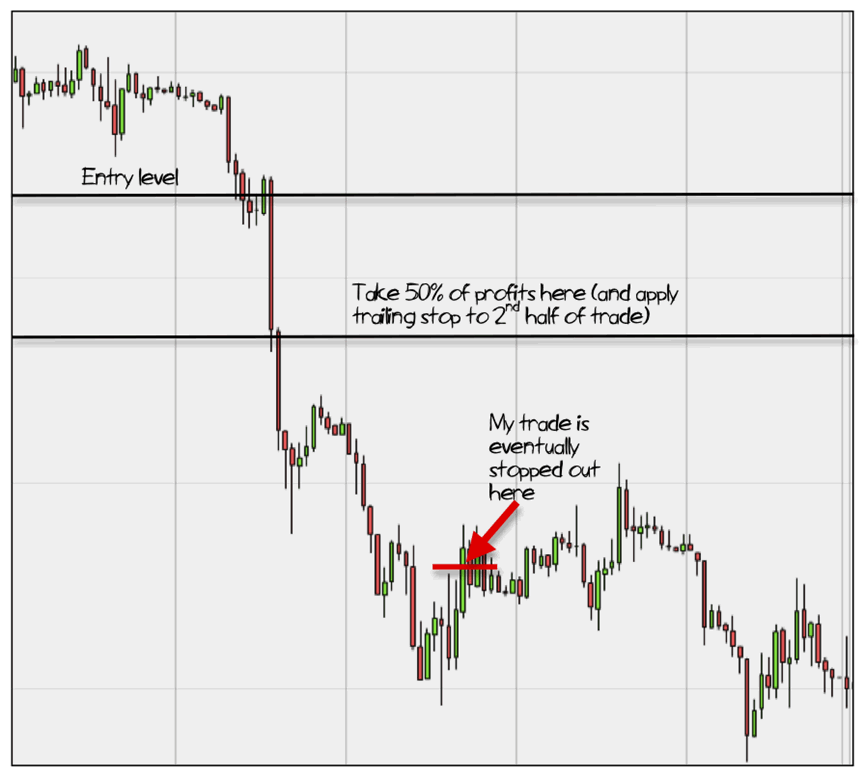 They say that history doesn’t repeat, but rhymes with, itself.
They say that history doesn’t repeat, but rhymes with, itself.
I don’t know about you, but looking at the charts and reading the economic news, I feel like I’m stuck in the chorus loop of some bad Euro-pop anthem.
With the US presidential elections behind us … signs of economic growth appearing (let’s not get excited and call them “green shoots” yet) …
Suddenly they’re out on the streets of Athens again … and we’re talking about bailing out the Spanish banks again … the Americans have remembered that “fiscal cliff” they’ve been driving their campaign bandwagons towards … and, surprise surprise, the markets have taken a significant downturn.
Even the most optimistic among us, who’ve been calling this a “minor correction” for the past month, and desperately trying to stick wallpaper over the chasm opening up on the charts, would now struggle to dress up what’s happened to the markets as a correction – they are looking full-on bearish.
And the state of the pound and the euro are going much the same way. Just look at all those trend lines getting smashed to pieces …
It’s worth remembering the adage about bear markets – that traders can lose in one day what the bull market has taken weeks to earn them.
I don’t say that to fill you with panic.
In fact, a bear market can be a fantastic place for us to make money – as long as we adapt our trading style to suit it.
Bear markets are naturally more volatile that bull markets.
So we need to be ready to adapt
In simplistic terms, a bull market sees us trudging slowly and steadily up hill, while a bear market sees us careering over the side in huge leaps and bounds!
If we approach the two in the same way, then those huge leaps and bounds can be dangerous to our financial wellbeing.
But if we adapt, then those leaps and bounds can be fantastic profit opportunities.
The technique I want to talk about today is: the runner.
No doubt, you’ve been told that you should “let your winners run”.
And when the market is making substantial moves, all the more reason to run with them.
But how can we do this without accidentally falling over a cliff?
The “runner” is a part of your trade that you keep open for as long as possible. And it can be a real meal ticket for traders.

The practicalities
To use a runner, you first need to divide up your trade into parts – so part will be closed, and part will be allowed to “run”. In practical terms, it means placing two traders rather than one, with half stakes each.
If you’re placing more trades, it’s important that you’re not doubling up on risk – so make sure that you half your stakes if you’re doubling your trades.
So, in the example shown below, we’ve entered two SELL trades, with two distinct profit targets.
When the price hits the first target, we’ll close out one of the trades, and move our stop loss on the other trade up to the entry level.

This simple adjustment to the way we trade can make a huge difference psychologically to the human need to “take a profit”. If you’ve already put some profit into your pocket, you’ll find that leaving the second half of the trade to run is a lot easier to do.
Especially in the knowledge that your “runner” is now risk-free, because you’ve moved your stop loss up to breakeven.
But, how far do we dare let our runner run for?
If we’re looking to take advantage of some serious volatility in our bear market, then combining our runner with a trailing stop can really pay off.
In the following example, after I’ve closed out the first half of my trade, instead of moving my stop loss to the entry level, instead I apply a trailing stop, which follows the downward trend, eventually closing my trade when the market reverses.

With this kind of trade, it’s a good idea to monitor the distance by which your trailing stop is “trailing”. If it’s too close, you can get bumped out of the trade before the market makes its move. If it’s too wide, then you can lose out on a lot of your gains when the market eventually turns.
If you can, the ideal is to monitor the trade, starting on with a relatively wide trail, and, as the profit gets larger, consider tightening it up to protect that profit. But bear in mind that this half of your trade should be risk-free, which should give you the freedom to be a little bolder.
In the next seven days …
We’ve a short week next week in the US markets, with Thursday off for Thanksgiving, and whichever intern pulled the short straw having to turn up on Friday for the half-day opening of the markets, while everyone else from Wall Street will be off for the long weekend.
The Friday after Thanksgiving is known as “Black Friday” – this isn’t as scary as it sounds. The “black” comes from “moving into the black” after retailers spend up on stock ahead of the holidays. The result is – a retail frenzy of sales.
Ahead of the Thanksgiving holidays, US figures will be focused on the housing market, with existing home sales on Monday and building permits on Tuesday. These are expected to show sluggish growth, but growth nonetheless.
In the Eurozone, we’ve Eurogroup meetings on Tuesday, about the next round of bailouts for Greece. It’s unlikely that Spain will feature too highly, ahead of the Catalan election the following weekend, which they’ll want to get out of the way.
The Eurozone PMIs on Thursday are likely to point to a fall in manufacturing and services. And the German IFO business climate survey on Friday is expected to point to another decline. This continued depression in the Eurozone will weigh heavily on the UK economy.
In the UK, we’ll see the minutes for the last MPC meeting on Wednesday, revealing the thinking behind the decision against further QE. On the same day, we’ll see the figures for public sector net borrowing, which are likely to show an increase on last year, which leaves George Osborne with some tough questions to answer.
